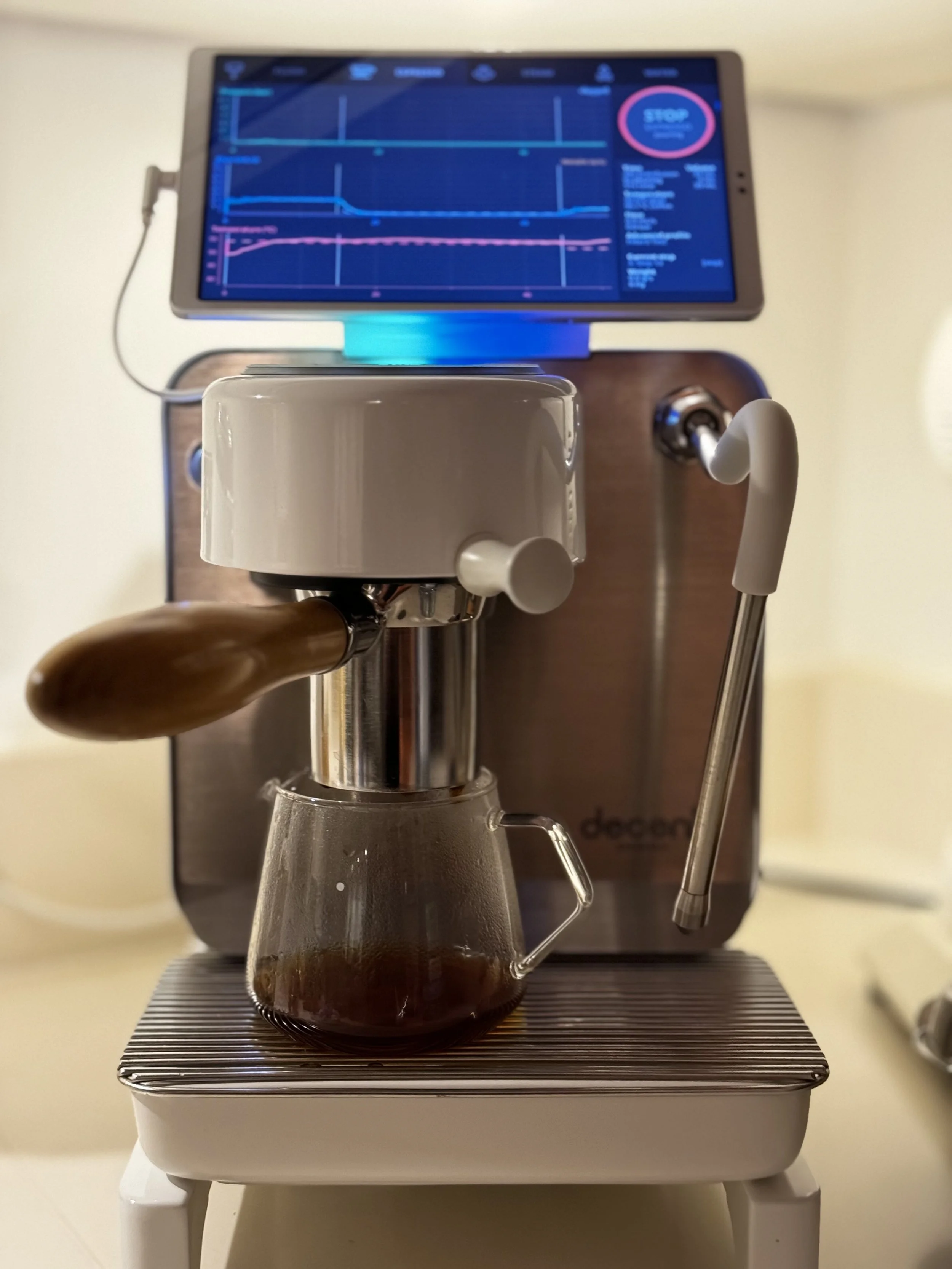How the Decent evolved to make delicious espresso easier
Disclaimer: I’ve worked with Decent Espresso from the start, helping to plan and design the DE1. I may be biased, but everything in this post is factual.
Having a software background, John designed the DE1 to be “unfinished” and able to add new capabilities as we think of them. John expected researchers and coffee nerds to come up with “what if it did this?” ideas, and he wanted the machine to evolve with that discussion. If you buy a traditional espresso machine now, its capabilities will be identical in ten years. If you buy a DE1, its capabilities change and improve almost weekly.
Decent Espresso users have access to the Decent Diaspora, a private online forum. The forum is always friendly and civil, and the number of incredibly intelligent people there is impressive. The community has come up with countless new ideas about espresso and has helped improve the DE1 and our understanding of how to make great espresso. Many of the espresso innovations I mention in this post would not have been possible without the Diaspora brain trust.
In the early days, the DE1 was considered “unforgiving” by many. I didn’t mind, as the DE1’s ability to control shot parameters more than made up for its early challenges.
The DE1 brewing Filter3
I think the machine was considered unforgiving for a few reasons:
Most of our profiles used a slow preinfusion flow rate, whereas everyone else, except Slayer users, was using a faster fill.
The Decent’s graphs allowed us to see evidence of extraction problems we had not been able to see before.
High quality, budget grinders were rare at the time. The Niche Zero and other new grinders changed that, and helped make it easier to pull good shots.
Since that time, we’ve learned a lot about shower screens, water distribution, and headspace above the puck, and have redesigned several parts to take advantage of what we’ve learned. Our forthcoming shower screen is incredible for both espresso and filter3. Over the past nine years the hardware has become much quieter, gained steam pressure, and become easier to control without the tablet, via the grouphead controller. The hardware improvements are impressive, but frequent software upgrades are what has set the DE1 apart from any other machine.
During the first year I had a DE1, I created the allongé and blooming espresso profiles to improve the quality of espresso from light roasts. Allongé taught us that lighter roasts taste better with faster flow rates, and has produced some of the most fruit-forward coffee I’ve ever tasted. Blooming taught us that the extraction “ceiling” is indeed above 30% EY, and that extremely high extractions can produce beautiful flavors with the right coffees. I haven’t uttered the phrase “overextraction” since creating the blooming espresso; it proved that harsh flavors do not in fact come from high extraction levels, but from channels. Jonathan Gagné has hypothesized that channels yield astringency and bitterness not because of high extractions along channels, but because channels allow larger, astringent particles an easier path out of the coffee bed and into the cup.
Allongé and Blooming, while quite different, share something in common: they both make espresso from light roasts less sour and bitter, and more balanced. A traditional espresso extraction removess more material from the upper layers of the puck, and at higher temperatures, than from the bottom of the puck. Allongé increases extraction and temperature at the bottom of the puck by running a large volume of water through the puck. Blooming increases extraction and temperature at the bottom of the puck via a 30-second bloom that homogenizes temperatures and extraction throughout the puck. Blooming arguably offers a more even espresso extraction than any other profile or machine can.
We learned that the most effective preinfusion may include a shift from high flow to low flow with a modest pressure buildup. We have found a slow pressure ramp after preinfusion, similar to that of some manual levers, helps compensate for imperfect puck prep. Jonathan Gagné came up with an “adaptive” profile that holds flow rate at whatever it was at a shot’s pressure peak. In the case of a grind setting being poorly “dialed in”, the adaptive profile optimizes the flow rate for the current grind setting.
The Decent community has come up with various ‘failsafe” ideas that prevent bad shots. For example, if the grind is too fine, rather than a shot choking and being destined for the sink, one can program the DE1 to limit the pressure and maintain a reasonable flow rate. Flow profiles have some ability to “heal” channels by decreasing pump pressure when the machine senses an increase in flow rate.
More recently, I have turned the DE1 into the world’s best single-cup filter-coffee machine. The Filter3 basket offers a “no bypass” brew with control over flow and temperature, and is one of the few single-cup brewers that offers appropriate bed depth with a 20g dose. Anyone who tasted Filter3 from the Prodigal booth at SCA Expo can vouch for its excellent, hands-free extraction quality.
Later this year, Decent will release its beautiful new machine, the Bengle, with some impressive new features, as well as a clever new shower screen that improves water distribution and prevents water from merging into a small number of streams.
Stay tuned, things are always evolving and improving.
The Decent Bengle, coming soon


